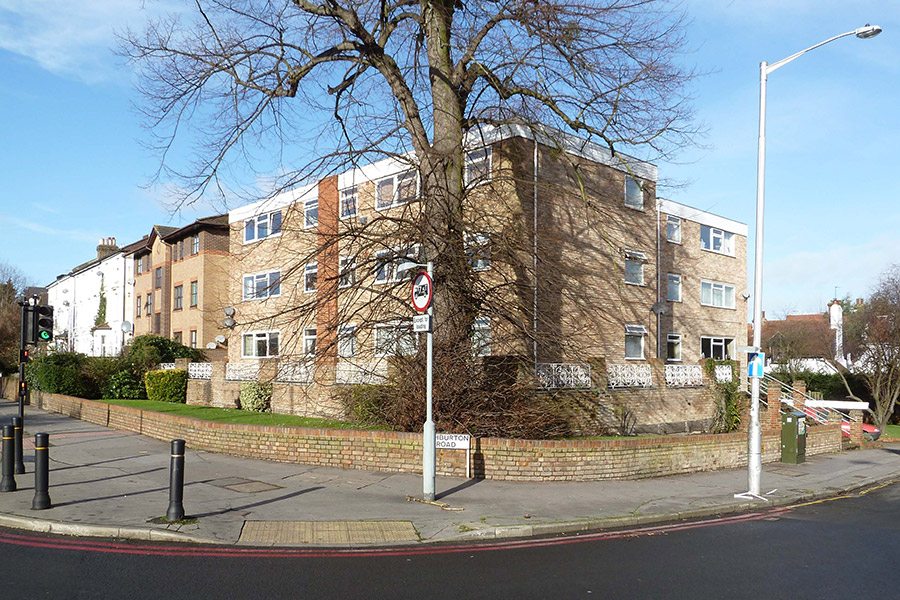-
 20th March 2018GPA gets planning permission for change of use of basement parking area, erection of...
20th March 2018GPA gets planning permission for change of use of basement parking area, erection of... -
 20th March 2018Are you a property developer? Do you want to unlock the potential of your...
20th March 2018Are you a property developer? Do you want to unlock the potential of your... -
 20th March 2018GPA gets planning permission for a new two storey detached house in Hounslow. The client’s...
20th March 2018GPA gets planning permission for a new two storey detached house in Hounslow. The client’s... -
 20th March 2018After several attempts to gain a Certificate of Lawfulness for a 2-storey rear extension...
20th March 2018After several attempts to gain a Certificate of Lawfulness for a 2-storey rear extension... -
 28th March 2018Get Planning and Architecture recently commissioned Upperlook, an aerial photography company who used a...
28th March 2018Get Planning and Architecture recently commissioned Upperlook, an aerial photography company who used a... -
 12th June 2018Our new website is live at www.get-planning.co.uk/ We want to give you an easier way...
12th June 2018Our new website is live at www.get-planning.co.uk/ We want to give you an easier way... -
 25th February 2022With London property values increasing and the cost of living following a similar pattern,...
25th February 2022With London property values increasing and the cost of living following a similar pattern,... -
 14th February 2025The appeal of double glazing in Britain’s historic properties has grown substantially as property...
14th February 2025The appeal of double glazing in Britain’s historic properties has grown substantially as property... -
 17th February 2025Listed buildings are structures of special architectural or historic interest that have been placed...
17th February 2025Listed buildings are structures of special architectural or historic interest that have been placed...

Planning Enforcement: A Comprehensive Guide
|
|
Published: 24th February 2025 Written by: Marcos Nobre |
Planning enforcement is the systematic process of investigating and resolving possible breaches of planning law. This crucial regulatory function ensures that development projects adhere to established planning regulations and permissions granted by local authorities. When individuals or organisations fail to comply with planning requirements, enforcement officers step in to address these violations, protecting community interests and maintaining the integrity of the planning system.
The enforcement process involves a series of escalating steps designed to identify, verify, and resolve planning breaches. Local authorities employ specialised planning enforcement officers who work diligently to ensure compliance with planning regulations. These officers possess extensive knowledge of planning law and are equipped with statutory powers to investigate potential breaches, gather evidence, and initiate appropriate enforcement actions when necessary.
What Constitutes a Planning Breach?
A planning breach occurs when development proceeds without the required planning permission or when it deviates from the specific conditions and details outlined in granted permissions. These breaches can take various forms, ranging from unauthorised changes to the use of land or buildings to the construction of structures without proper approval. Even seemingly minor modifications, such as alterations to the exterior appearance of buildings in conservation areas, can constitute significant planning breaches if undertaken without the necessary permissions.
Planning breaches are not automatically criminal offences, but they do expose property owners to potential enforcement actions. The severity of a breach is typically assessed based on its impact on the surrounding environment, community, and alignment with local planning policies. It’s important to note that ignorance of planning requirements does not provide legal protection, as property owners are expected to understand and comply with relevant planning regulations that govern their properties.
The Role of Anonymous Complaints
Anonymous complaints via Council websites serve as a vital channel through which the public can report suspected planning breaches without fear of personal repercussions. These confidential reporting mechanisms empower citizens to act as additional “eyes and ears” for planning authorities, helping to identify violations that might otherwise go undetected by official monitoring systems. Local authorities typically provide user-friendly online forms that allow individuals to submit detailed information about potential breaches, including location, nature of the suspected violation, and any supporting evidence.
While anonymous reporting is designed to protect the identity of complainants, the information provided must still be substantive enough to warrant investigation. Planning departments assess each complaint to determine its credibility and potential planning implications before allocating resources to formal investigations. This balance between accessibility and resource management ensures that enforcement efforts remain focused on genuine planning issues while still respecting the public’s role in the enforcement ecosystem.
How Planning Officers Become Aware of Breaches
When Council planning officers become aware of a possible planning breach, they initiate a systematic procedure to address the situation. Awareness may come through various channels, including public complaints, routine monitoring activities, or referrals from other departments within the Council. Once a potential breach is identified, officers carefully evaluate the information to determine whether further investigation is warranted based on planning policies and regulations.
If the initial assessment suggests a possible violation, officers open an enforcement file on the case, establishing a formal record of the alleged breach and subsequent actions. This file serves as the central repository for all evidence, correspondence, and decisions related to the case. The opening of an enforcement file marks the beginning of a structured investigative process, during which officers will gather information, conduct site visits, and ultimately determine whether a breach has occurred and what enforcement actions, if appropriate, should be taken.
Steps in the Enforcement Procedure
The enforcement procedure follows a well-defined sequence of steps designed to establish facts, ensure procedural fairness, and resolve planning breaches effectively. This process typically begins with information gathering and preliminary assessments to determine whether a breach has occurred and, if so, its nature and extent. Planning authorities generally adopt a proportionate approach, seeking to resolve minor breaches through negotiation before resorting to more formal enforcement actions.
The procedure advances through increasingly formal stages if initial attempts at resolution prove unsuccessful. Each step provides property owners with opportunities to address the alleged breach, either by demonstrating compliance, seeking retrospective permission, or making necessary adjustments to their development. Throughout this process, planning authorities must balance enforcement objectives with considerations of fairness, proportionality, and the public interest, ensuring that enforcement actions are appropriate to the circumstances of each case.
Property Inspections in Enforcement Cases
Inspection of your property serves as a critical early step in the enforcement process, allowing planning officers to gather firsthand evidence about potential breaches. During these visits, officers assess whether development has occurred without permission or in violation of approved plans. They carefully document their observations through photographs, measurements, and detailed notes, creating an evidential basis for any subsequent enforcement actions.
While guidance requires property owners to receive proper notification of planned inspections, unannounced visits sometimes occur, particularly in cases involving tenanted properties or where authorities suspect evidence might be concealed or altered if advance notice is given. These surprise inspections, though potentially disconcerting for property owners, are conducted within strict legal parameters that balance enforcement needs with property rights. Officers must identify themselves properly, explain the purpose of their visit, and respect reasonable limitations on their access, even during unannounced inspections.
Planning Contravention Notices (PCNs)
When planning enforcement officers believe there may be a planning breach, they often issue a Planning Contravention Notice (PCN) as a formal information-gathering tool. This legal document requires recipients to provide specific details about the ownership, occupation, and use of the property in question. PCNs typically include direct questions about development activities, timing, and other relevant factors that help authorities determine whether planning regulations have been violated.
A PCN represents a significant escalation in the enforcement process, as it carries legal obligations for recipients. Failure to respond accurately and completely within the specified timeframe (usually 21 days) constitutes a criminal offence that can result in substantial fines. While PCNs primarily serve information-gathering purposes rather than directly mandating changes to development, they signal serious official concern about potential breaches and often precede more directive enforcement measures if the information provided confirms planning violations.
Retrospective Planning Applications
A retrospective planning application offers a potential remedy for unauthorised development, allowing property owners to seek formal approval for work already completed or uses already established. This process involves submitting standard planning application materials, accompanied by appropriate fees, but with the understanding that development has already occurred. The application undergoes the same rigorous assessment as pre-development applications, including public consultation, policy evaluation, and consideration of environmental and community impacts.
While retrospective applications provide a path to legitimise unauthorised development, they offer no guarantee of approval. Planning authorities assess these applications against the same criteria used for advance permissions, and refusal remains a distinct possibility if the development conflicts with planning policies or causes unacceptable impacts. Importantly, submitting a retrospective application temporarily prevents further enforcement action while the application is under consideration, providing a valuable breathing space for property owners to present their case for retention of the development.
Ceasing Property Use as an Enforcement Option
Ceasing the use of property represents one of the more severe remedies that may be required to resolve planning breaches. When unauthorised changes to property use occur—such as converting a residential dwelling to commercial premises without permission—planning authorities may instruct owners to discontinue the unauthorised use and return the property to its lawful purpose. This demand typically comes after other resolution attempts have failed and where the unauthorised use conflicts significantly with planning policies or causes substantial harm.
The requirement to cease using a property in a particular way can have profound financial and practical implications for property owners. It may necessitate relocating businesses, terminating rental agreements, or finding alternative premises for activities that can no longer continue at the site. Authorities generally provide reasonable timeframes for compliance, but failure to adhere to these instructions can trigger escalating enforcement actions, including formal notices that create criminal liability for continued non-compliance.
Responding to a PCN
Responding to a PCN requires careful consideration and strategic thinking, as your response can significantly influence subsequent enforcement decisions. When you receive a PCN, you face legal obligations to provide accurate information about specified aspects of your property and development activities. The notice typically includes detailed questions about ownership, timeline of development, nature of uses, and other relevant factors that help authorities determine whether planning regulations have been breached.
Given the legal implications of PCN responses, consulting with planning professionals before submitting your response is highly advisable. Planning consultants or specialised attorneys can help you frame your answers in ways that accurately meet your legal obligations while protecting your interests. They may identify important nuances in planning law that affect your case or help you prepare supporting documentation that strengthens your position. A well-crafted response can sometimes resolve misunderstandings or demonstrate that no breach has occurred, potentially avoiding further enforcement action.
Enforcement Notices
An Enforcement Notice represents one of the most serious formal interventions in the planning enforcement process. This statutory notice specifies the alleged breach, explains why planning permission would not be granted for the development, and sets out specific steps the recipient must take to remedy the situation. Enforcement Notices typically include precise compliance deadlines, after which continued non-compliance becomes a criminal offence punishable by substantial fines, and potentially, court orders to complete the required remedial work.
The issuance of an Enforcement Notice marks a significant escalation in the enforcement process, indicating that the planning authority has determined a breach exists and requires formal correction. These notices are legally binding documents that run with the land, affecting current and future property owners until compliance is achieved. Given their serious implications, Enforcement Notices must meet strict legal requirements regarding content, service method, and timing—any procedural defects could render them invalid and subject to successful challenge.
Appealing an Enforcement Notice
Enforcement Notice appeals provide a critical safeguard in the planning enforcement system, allowing recipients to challenge notices they believe are unwarranted or excessive. Appeals must be submitted to the Planning Inspectorate within a strict timeframe, typically 28 days from the notice’s issue date. This independent government body reviews the case impartially, considering evidence from both the property owner and the local planning authority before reaching a determination that may uphold, modify, or quash the notice entirely.
When appealing an Enforcement Notice, you can base your challenge on several specific grounds established in planning legislation. These include assertions that no breach has occurred, that the development should be granted planning permission, that the notice requirements are excessive, or that insufficient time has been allowed for compliance. The appeal process typically involves written submissions, though more complex cases may warrant a formal hearing or public inquiry. During the appeal period, the Enforcement Notice remains suspended, providing temporary relief from compliance requirements until the appeal is decided.
Serious Consequences of Planning Breaches
Planning breaches can have very serious consequences that extend far beyond simple requirements to undo unauthorised work. The repercussions can be financial, legal, and practical, affecting property owners for years after the initial violation. Criminal prosecution represents one potential outcome for serious or persistent breaches, particularly when Enforcement Notices are ignored. Convictions can result in substantial fines, with courts empowered to impose penalties reflecting the financial benefit derived from the breach.
Beyond direct legal consequences, planning breaches can significantly complicate property transactions and financing. Breaches are recorded in local land charges registers and must be disclosed during property sales, often deterring potential buyers or dramatically reducing property values. Mortgage lenders may refuse to provide financing for properties with unresolved planning issues, and insurance coverage may be compromised. These market-based penalties can sometimes exceed the formal sanctions imposed by authorities, creating powerful incentives for compliance with planning regulations.
The Proceeds of Crime Act (POCA) in Planning Enforcement
The Proceeds of Crime Act (POCA) represents one of the most formidable enforcement tools available to planning authorities when addressing serious planning breaches. Originally designed to target organised crime, this legislation allows authorities to pursue confiscation of financial benefits derived from criminal conduct—including planning violations. When unauthorised development generates rental income or increases property value, these financial gains can be classified as “criminal benefit” and become subject to confiscation proceedings following a planning offence conviction.
POCA proceedings typically follow successful prosecution for planning violations and involve detailed financial investigations to determine the extent of benefit derived from the breach. Courts have broad powers to order the repayment of these benefits, with confiscation orders frequently reaching tens or even hundreds of thousands of pounds in significant cases. Importantly, these financial penalties apply in addition to standard fines for the planning offence itself, creating a powerful deterrent against deliberate violations motivated by financial gain. Failure to satisfy POCA confiscation orders can result in imprisonment, underscoring the serious consequences of planning breaches in the contemporary enforcement landscape.
Notification to Financial Stakeholders
When planning breaches are formally identified, all parties having a financial interest or charge on your property will be notified about the alleged planning breach. This disclosure requirement ensures that mortgage lenders, building societies, and other financial stakeholders are made aware of regulatory issues that may affect the value and legal status of their security. Local authorities typically send formal notification letters to registered charge holders, enclosing copies of relevant enforcement documents and explaining the nature of the alleged violations.
These notifications can trigger serious responses from financial institutions, which have vested interests in maintaining the value and legal compliance of mortgaged properties. Lenders may conduct their own risk assessments upon receiving such notices, potentially leading to demands for immediate resolution of planning issues or even accelerated repayment requirements if they determine the breach substantially undermines their security. Some mortgage agreements contain specific clauses requiring borrowers to maintain compliance with planning regulations, meaning that breaches could technically constitute default events under lending terms, giving institutions legal grounds to review or revise lending arrangements.
Impact on Property Saleability
Planning breaches can render property effectively unsaleable for extended periods, creating significant financial hardship and practical complications for owners. When enforcement actions remain unresolved, prospective buyers face substantial risks that typically deter purchase interest, regardless of price discounts offered. The standard property transaction process requires sellers to disclose outstanding enforcement issues through property information forms, making concealment of these problems both unethical and potentially illegal.
The impact on saleability extends beyond mere difficulty in finding willing buyers. Conveyancing solicitors routinely advise clients against purchasing properties with unresolved planning issues due to the unpredictable costs and timeframes involved in remediation. Mortgage lenders similarly decline to provide financing for properties subject to enforcement action, effectively eliminating most potential purchasers from the market. This combination of legal disclosure requirements, professional caution, and financing obstacles can leave property owners in a difficult position where they cannot sell their property yet remain responsible for its maintenance, security, and any ongoing enforcement compliance requirements.
How a Planning Enforcement Consultant Can Help
Planning enforcement consultants provide specialised expertise that can transform how planning breach cases are managed and resolved. These professionals bring detailed knowledge of planning legislation, enforcement procedures, and negotiation strategies that helps property owners navigate complex enforcement situations effectively. Their involvement often begins with a comprehensive assessment of the alleged breach, reviewing the factual and legal bases for enforcement action and identifying potential defences or mitigation strategies tailored to specific circumstances.
One of the most valuable services these consultants offer is direct negotiation with planning authorities. Their professional standing and understanding of planning objectives allow them to engage constructively with enforcement officers, often securing time extensions, negotiated remedies, or even withdrawal of enforcement actions in appropriate cases. For situations requiring formal responses or appeals, consultants can prepare compelling technical arguments supported by planning policy analysis, case law references, and where beneficial, commissioned specialist reports addressing specific aspects of the case. This comprehensive approach transforms what might otherwise be an intimidating and potentially costly enforcement process into a more manageable situation with clearer pathways to resolution.
